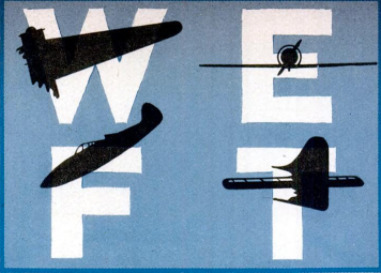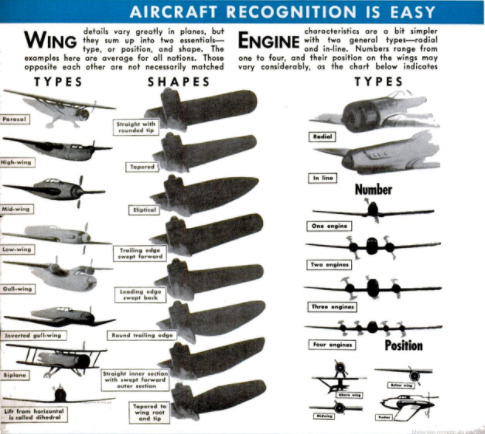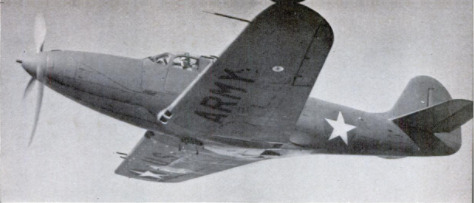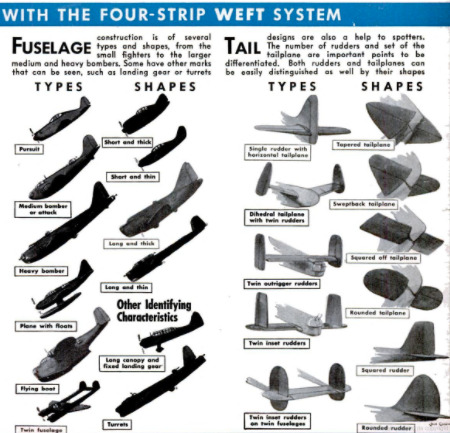WEFT System for Aircraft recognition
Item
-
Title (Dublin Core)
-
WEFT System for Aircraft recognition
-
Article Title and/or Image Caption (Dublin Core)
-
Title: Army shows the spotter what to see
-
Subtitle: Aircraft design easy to identify when broken down into main parts
-
extracted text (Extract Text)
-
KNOWN as “WEFT” from the initials of
the words “wing,” “engine,” “fuselage,”
and “tail,” this system of identifying planes
in the air simplifies a problem that had
grown complicated with the development of
a vast number of different aircraft designs.
The WEFT system emphasizes the parts a
spotter can most readily see, recognize, and
describe—the particular features and shapes
characteristic of certain planes and types.
From the combination, the nationality can
often be determined, even when insignia are
not clear, and also the type and distance
of the plane from its base, giving a clew
to possible additional forces.
For example, the plane above has a ta-
pered, low Wing, single Engine, pursuit
Fuselage, and single-rudder, horizontal-
tailplane Tail. It is a U. S. Army P-39, the
Bell Airacobra.
A number of features are shown below—
not all, but averages found in aircraft of
all nations. Illustrations reprinted from the
Army Orientation Course chart.
-
Language (Dublin Core)
-
eng
-
Date Issued (Dublin Core)
-
1943-02
-
pages (Bibliographic Ontology)
-
82-83
-
Rights (Dublin Core)
-
Public Domain (Google Digitized)
-
Archived by (Dublin Core)
-
Matteo Ridolfi
-
Marco Bortolami (editor)
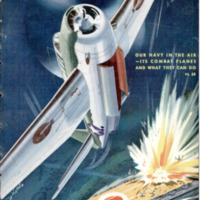 Popular Science Monthly, v. 142, n. 2, 1943
Popular Science Monthly, v. 142, n. 2, 1943

